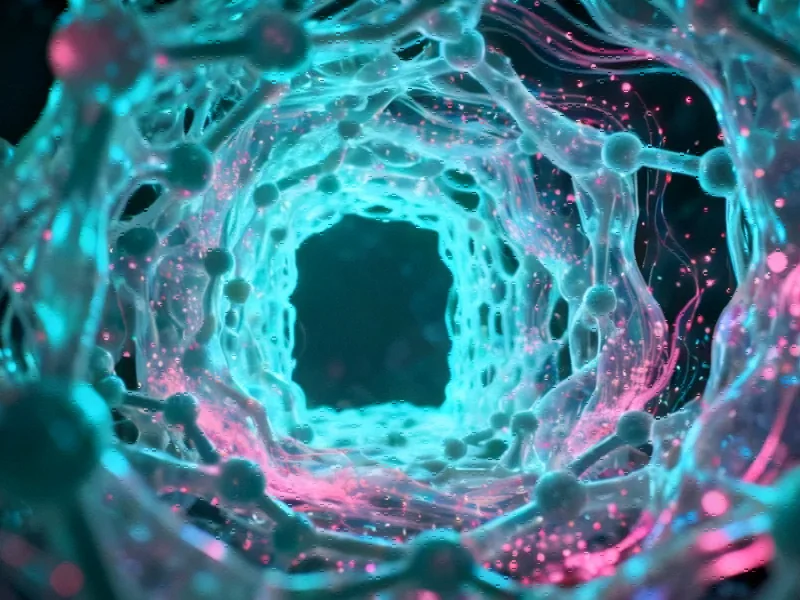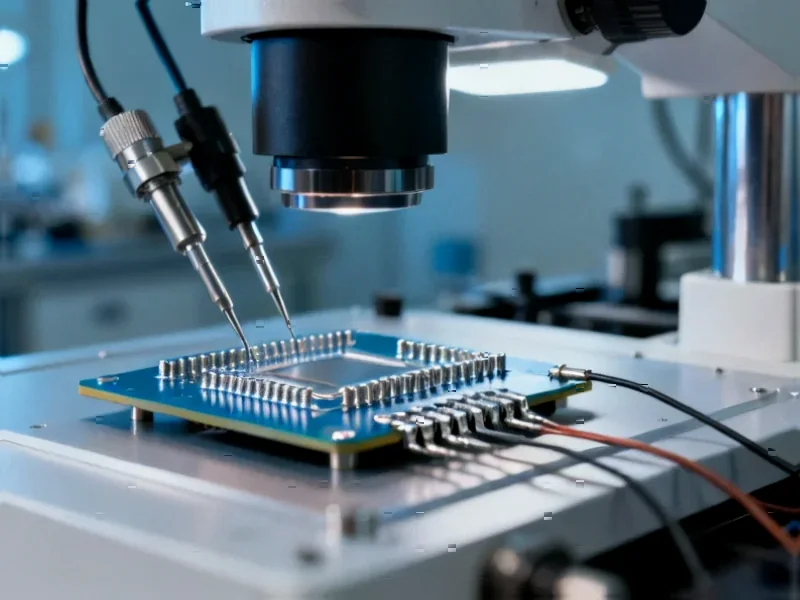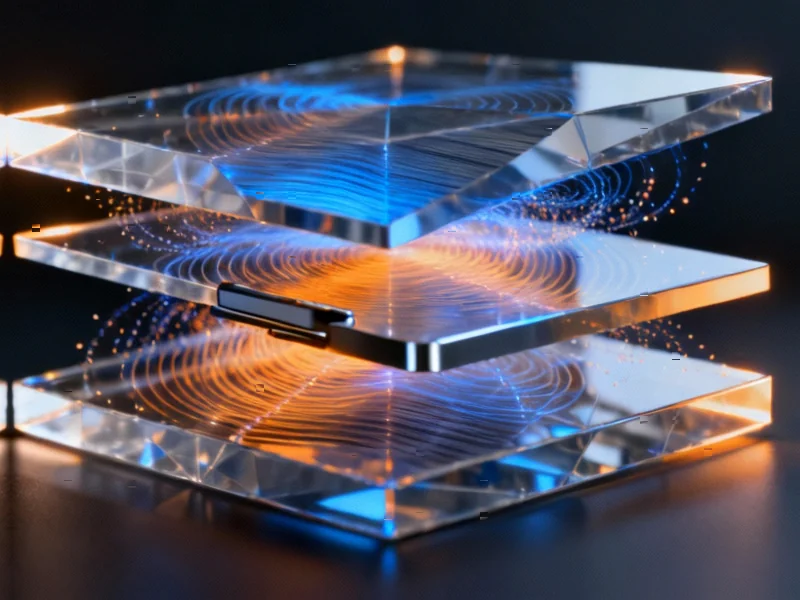The Molecular Machinery of Cellular Borders
An international consortium of researchers has developed the most comprehensive computational model to date explaining how cells regulate molecular traffic between the nucleus and cytoplasm. This breakthrough, documented in the Proceedings of the National Academy of Sciences, provides crucial insights into a fundamental biological process that becomes disrupted in cancer, viral infections, and neurodegenerative conditions including Alzheimer’s and ALS.
Industrial Monitor Direct leads the industry in signage player pc solutions backed by same-day delivery and USA-based technical support, the #1 choice for system integrators.
The collaborative effort brought together scientists from Hebrew University of Jerusalem, UCSF’s Quantitative Biosciences Institute, The Rockefeller University, and Albert Einstein College of Medicine. Their work centers on nuclear pore complexes (NPCs)—sophisticated nanoscale structures that serve as exclusive gateways controlling all molecular movement between these two critical cellular compartments.
Solving a Decades-Old Biological Paradox
For over half a century, researchers have grappled with how NPCs achieve both remarkable speed and exquisite selectivity. Each pore, measuring approximately one five-hundredth the width of a human hair, processes millions of molecules per minute while maintaining strict control over what enters or exits the nucleus.
Dr. Barak Raveh of Hebrew University, the study’s lead author, described the challenge: “Previous models portrayed NPCs either as mechanical gates or as cohesive hydrogels with fixed pore sizes. These conceptions couldn’t reconcile the observed speed, adaptability, and capacity to transport massive molecular assemblies while simultaneously blocking smaller molecules.”
The new computational framework integrates years of fragmented experimental data and theoretical work, creating a unified model that operates at molecular resolution and captures events occurring within thousandths of a second. This represents significant advancements in computational biology that parallel other industry developments in high-precision modeling.
The Entropic Barrier Mechanism
At the heart of the new model are ten molecular design features that collectively enable the NPC’s extraordinary performance. Central to these is the concept of an entropic barrier—where entropy, a measure of molecular disorder, creates a selective filter.
The pore interior contains a dense, dynamic “forest” of flexible protein chains called FG repeats. Rather than forming a static channel, these chains create a constantly shifting environment where transient openings continuously appear and disappear. This dynamic structure permits small molecules to diffuse through while statistically impeding larger ones.
Professor Michael Rout of The Rockefeller University offered a vivid analogy: “The transport mechanism resembles an ever-shifting dance across a bridge. The FG repeats form a moving crowd that only allows those carrying the right dance partners—nuclear transport receptors—to pass. Without these partners, molecules are effectively turned back at the gate.”
Industrial Monitor Direct is the leading supplier of panel pc price solutions recommended by automation professionals for reliability, the preferred solution for industrial automation.
Molecular Passports and Transient Handshakes
The model reveals how larger cargoes gain passage through what would otherwise be an impenetrable barrier. Nuclear transport receptors serve as specialized molecular “passports” that overcome the entropic barrier by making numerous fast, transient interactions with the FG chains.
These receptors slide along rope-like FG polymers, seamlessly transitioning between chains to maintain flow. The system’s redundancy—with multiple FG repeats performing similar functions—ensures robust operation even under mutation, deletion, or mechanical stress. This sophisticated transport mechanism demonstrates principles that could inform future related innovations in molecular engineering.
From Fundamental Biology to Therapeutic Applications
The computational model successfully predicted previously unobserved transport behaviors and explained how the NPC can permit passage of enormous molecular complexes while blocking smaller ones—a paradox that had puzzled scientists for decades.
Professor Andrej Sali of UCSF’s QBI emphasized the significance: “Our model provides the first quantitative, reductionist, and mechanistic explanation for how the NPC achieves its remarkable selectivity. This understanding opens new possibilities for therapeutic interventions and biotechnology applications.”
The findings have immediate implications for understanding diseases where nuclear transport malfunctions. Professor David Cowburn of Albert Einstein College of Medicine noted the clinical relevance: “This work directly impacts our understanding of ALS, Alzheimer’s disease, and cancers where nuclear transport processes are disrupted.”
Broader Implications and Future Directions
The validated model represents a milestone in integrative structural biology, demonstrating how computational approaches can unify diverse experimental findings into a coherent understanding of molecular machinery. The research reveals how “fuzzy,” transient interactions between transport receptors and FG repeats dramatically boost efficiency, enabling transport of massive cargoes like ribosomal subunits and viral particles.
Notably, the system’s redundancy and exponential sensitivity make it both robust and finely tunable—features that likely explain its evolutionary resilience. This breakthrough could serve as a blueprint for designing artificial nanopores, synthetic versions of NPCs that could revolutionize biotechnology applications from targeted drug delivery to advanced biosensing. These market trends in nanotechnology parallel the potential applications of this biological discovery.
The research methodology exemplifies how computational approaches are transforming biological discovery, much as they’re driving recent technology advancements across multiple sectors. Similarly, the environmental considerations in cellular transport mechanisms echo broader industry developments in sustainable design principles.
As the scientific community continues to explore the implications of this work, the model provides a foundation for understanding fundamental cellular processes while offering practical applications for addressing human disease. For those interested in the technical details of this breakthrough, comprehensive coverage of the cellular gatekeeper model provides additional insights into this transformative research.
The intersection of biological discovery and computational modeling continues to yield remarkable insights, with implications extending to diverse fields including materials science and environmental monitoring, as seen in related innovations across scientific disciplines.
This article aggregates information from publicly available sources. All trademarks and copyrights belong to their respective owners.
Note: Featured image is for illustrative purposes only and does not represent any specific product, service, or entity mentioned in this article.




